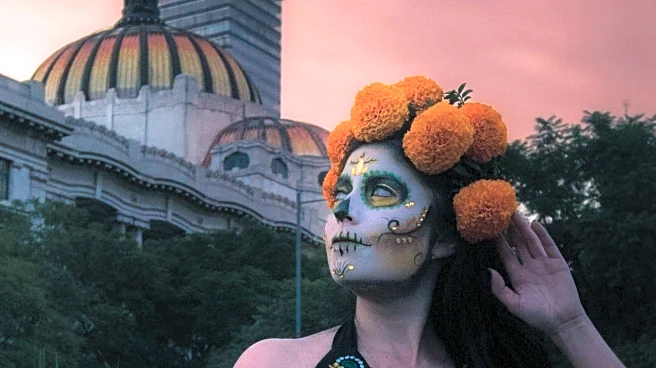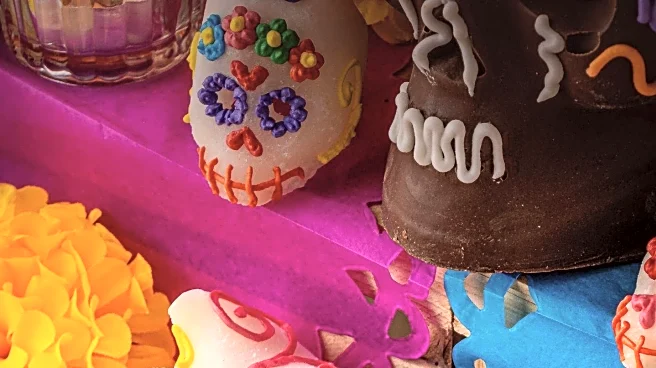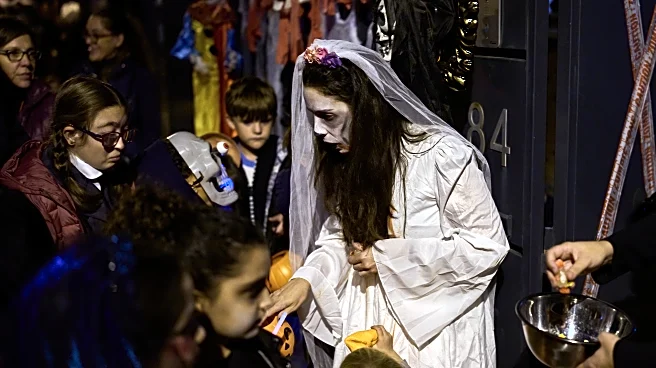What's Happening?
Dia de los Muertos, or the Day of the Dead, is a vibrant celebration in Mexico that honors deceased loved ones. In San Andrés Mixquic, a small town near Mexico City, the holiday is marked by traditional practices such as creating ofrendas, or altars,
adorned with marigolds, candles, and photographs of the deceased. The celebration, which has roots in the Aztec empire, has evolved to incorporate elements from the European Christian tradition of All Saint’s Day. In recent years, modern influences, including those from Hollywood, have been integrated into the festivities. For instance, a Day of the Dead parade in Mexico City was inspired by a scene from the 2015 James Bond movie 'Spectre'. Despite these changes, families like the Jiménez family in San Andrés Mixquic maintain deeply personal and traditional celebrations, emphasizing the importance of memory and gratitude towards ancestors.
Why It's Important?
The Dia de los Muertos celebration is significant as it highlights the cultural fusion and evolution of traditions in Mexico. It serves as a reminder of the country's rich indigenous heritage and its adaptation to modern influences. The holiday is not only a cultural event but also an economic one, attracting tourists from around the world, which boosts local economies. The celebration fosters a sense of community and continuity, as families pass down traditions to younger generations, ensuring the preservation of cultural identity. Additionally, the holiday's growing popularity outside Mexico, particularly in the United States, reflects the increasing influence of Mexican culture globally.
What's Next?
As Dia de los Muertos continues to gain international recognition, it is likely that the celebration will further evolve, incorporating new elements while maintaining its core traditions. The involvement of tourists and the global interest in the holiday may lead to more widespread celebrations outside Mexico, potentially influencing how the holiday is perceived and practiced. Communities may face challenges in balancing traditional practices with modern adaptations, but the emphasis on family and remembrance is expected to remain central to the celebrations.
Beyond the Headlines
The Dia de los Muertos celebration raises questions about cultural appropriation and the commercialization of traditional practices. As the holiday gains popularity, there is a risk that its cultural significance could be overshadowed by commercial interests. This highlights the need for respectful engagement with cultural traditions and the importance of preserving the authenticity of such celebrations. The holiday also offers a unique perspective on death, viewing it as a natural transition rather than a somber event, which could influence broader cultural attitudes towards mortality.















